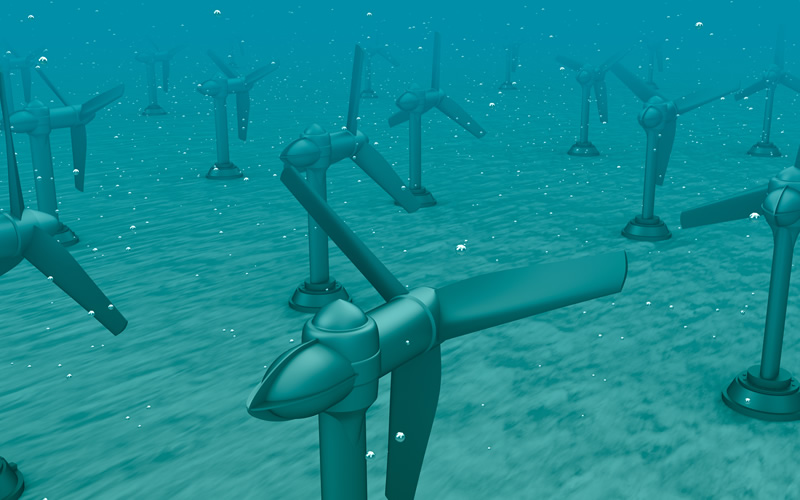Advantages and Disadvantages of Tidal Power

It is becoming clearer and clearer by the day that the world must break its addiction to fossil fuels. With humanity’s use of fossil fuels have come air, land, and water pollution, more greenhouse gases generated than the environment can handle, and political and armed conflicts, among many other issues [1,2]. It is clear that humanity must switch to sustainable energy sources to ensure the survival of both ourselves and of our precious environment upon which we all depend.
As there is no “one size fits all” energy solution for every location and condition, humanity’s energy future will likely consist of a variety of energy sources that are tailored to meet the unique needs and resources of each place. One of the options that may be explored as part of our future energy toolkit is tidal power, the capturing of the energy in the ocean’s tides to generate electricity. However, as with all energy sources, there are advantages and disadvantages to using this type of energy.
Advantages of tidal power
- Renewable and fossil fuel free
Unlike fossil fuels, tides are a nearly unlimited resource that we aren’t running out of. This type of energy does not generate greenhouse gases or cause pollution through oil spills or burning like fossil fuels do.
- Predictable and consistent power
The tides occur every day at predicted times, and how much power the tides contain is relatively consistent. This consistent energy in tides allows for the construction of appropriate equipment that effectively collects the energy.
- Efficient at low speeds
Since water is 1,000 times more dense than air, electricity can be generated from tides much more efficiently at slower speeds than wind turbines can.
- Long lifespan of plants
The estimated lifespan of tidal energy plants is about 75-100 years, which is much longer than nuclear power plants. The world’s oldest tidal energy plant, La Rance, in France has continued to efficiently produce large amounts of electricity since 1966.
This lower cost of equipment and facility replacement can translate to lower energy costs for consumers who use the plant’s energy.
- Low cost to run
Although tidal energy plants are very expensive to construct, they are relatively inexpensive to run, and require few staff to run them.
Disadvantages of tidal power
- Environmental effects and disruptions to the tidal flow
The primary form of tidal power plant that exists today is the barrage, a dam built across estuaries. These barrages block the flow of the tides in estuaries in order to capture tidal energy.
Because estuaries act as nurseries and provide habitat for many species of marine life, building barrages in this habitat can have many negative impacts, including the disruption of fish migrations and the movement of large marine animals.
Estuaries also help to filter out the sediments and pollutants from rivers and other water bodies prior to the water reaching the ocean. If barrages are built in estuaries, these ecosystems can no longer efficiently provide such important ecosystem services.
Until further research is done, we don’t yet know all of the long-term environmental impacts of underwater tidal power turbines and barrages.
- Expensive to construct
The construction of tidal energy plants requires very large initial capital investments.
- Limited locations
Tidal energy plants require specific site characteristics. Thus far, only 40 of such appropriate sites have been identified globally, limiting the potential for development.
- Distance from the grid
In many cases, the energy generated by the tides is a long distance from where the electricity will be consumed inland. This makes it difficult for tidal energy to provide electricity for any communities but those that are in close proximity to coastlines. Currently, there are no collection or storage systems that exist to transport tidal energy to inland areas.
- Limited useful period
Surging tides only occur during 10 hours out of every 24 hour period. This translates to limited energy collection that occurs during only about 40% of the year. To solve this issue, tidal energy storage capacity will need to be developed for transmission during the remaining 60% of the time.
- New technology, few implementations
To date, there are only a few tidal energy plants that have been constructed worldwide, and we don’t yet know all of the environmental impacts, nor ultimately whether the benefits of this technology will outweigh the costs.
Continued research is needed to determine the appropriateness of this technology compared with other sustainable energy sources.
- Aesthetics
The construction of a tidal energy plant alters the view along coastlines that are sought after for other uses such as economic activities, recreation, and tourism.
- Long gestation time
It takes a long time for planned tidal energy plants to be constructed and to get them running. Such a long gestation period, along with the high costs of construction, may not be considered worth the investment compared with other renewable energy projects such as wind and solar energy.
- Weather effects
Bad weather and storm events such as hurricanes that occur along coastlines can damage tidal power equipment.
- Equipment maintenance can be challenging
Rugged coastal environments in many areas may make it difficult for engineers to maintain and repair tidal energy equipment.
While tidal power may become a part of our energy toolkit in a carbon-constrained future, we must thoroughly study and consider the negative impacts of tidal power technology and strive to reduce them as much as possible.
References
[1] http://climate.nasa.gov/evidence/
[2] https://www.hampshire.edu/pawss/oil-conflict

